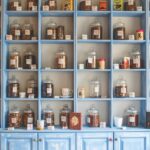About Cistus Incanus Tea as Treatment for Parkinson’s
Dietrich Klinghardt MD discusses a simple treatment for many illnesses including Parkinsons in this 11 minute video. Click the link below to watch (scroll down to find his video)
Release of Retro Viruses are a foundational cause of Parkinson’s
Here are Dr. Klinghardt’s instructions for brewing the tea:
- Boil slowly with the lid on.
- Steam for 5 minutes
- Add Stevia
- Drink 6-8 cups every day
- Re-brew the tea several times
Below is the source of the tea Dr. Klinghard recommends
Research Evidence on Cistus Incanus Tea
Abstract
Recently, previously known viruses have changed their pathogenicity and encompassed new types of host populations. An example of such an infection is that caused by SARS-CoV, belonging to the “well-known” coronavirus family. Another group of viruses that are of great importance to the human population are the herpes viruses.
Due to increasing viral resistance to existing antiviral drugs, plant extracts are attracting increasing interest due to their complex composition and their simultaneous attack of different viral targets. Based on the above, we tested the antiviral potential of water-alcoholic extract obtained from a commercial sample of the plant Cistus incanus L. against the enveloped viruses SvHA1, SvHA2 (ACV resistant) and HCoV 229E.
The results showed both complete inhibition of the intracellular stages of the viral replication and a strong effect on extracellular virions in the three viral models. In a study of the effect on the replication of SvHA 2, the calculated selectivity index was over 10. From the experiments on the virucidal effects on the two herpes viruses, it was found that the viral titer of the samples decreased by about 4 lg compared to the control sample. The extract is of interest for introduction into practice.






